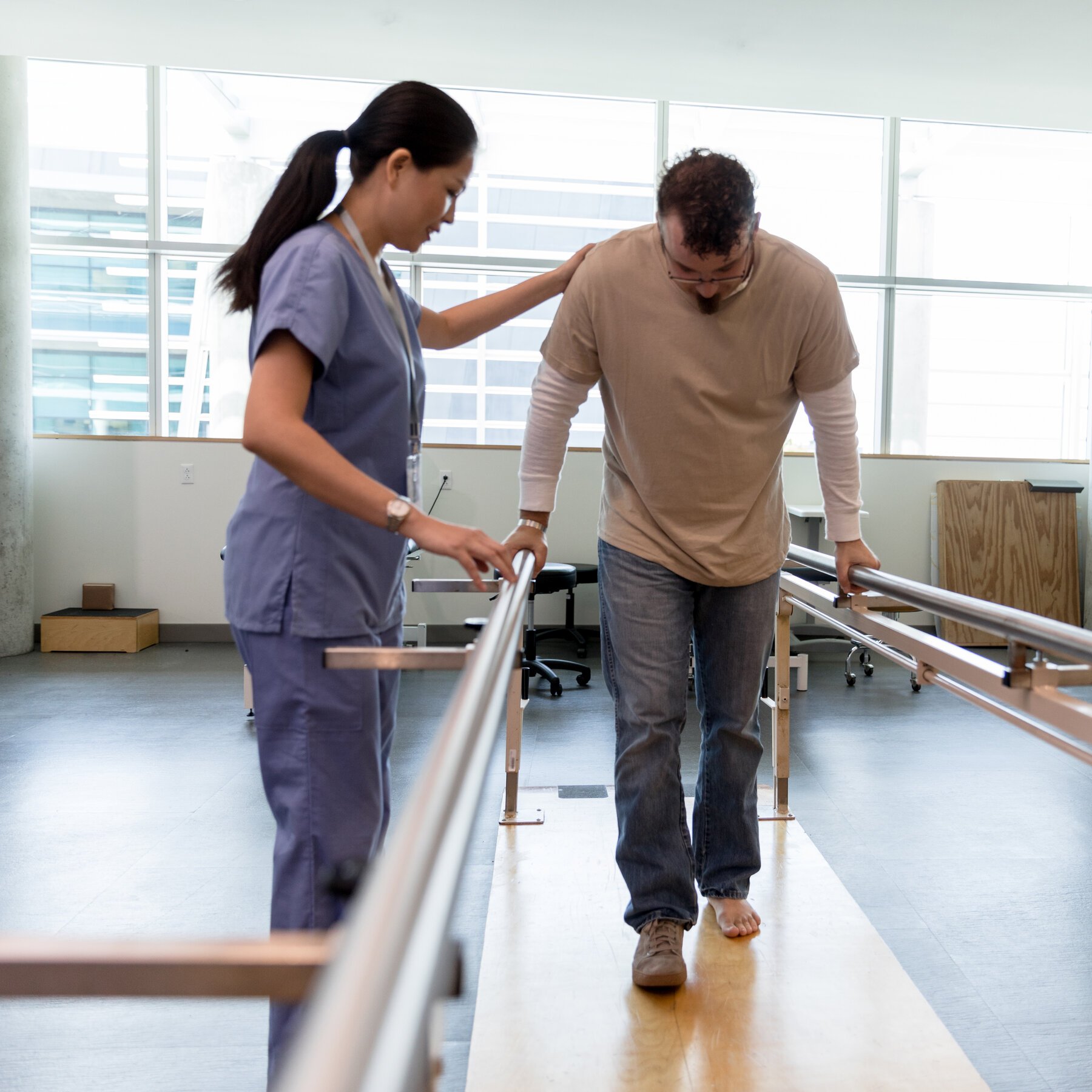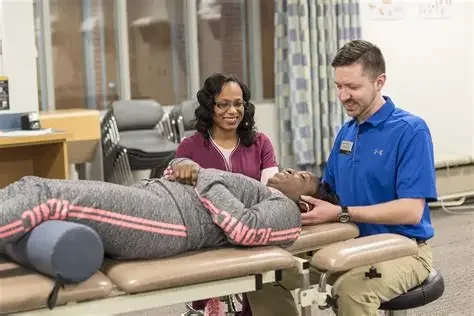PhysicalTherapy
What is Physical Therapy?
Physical Therapy (PT) is a healthcare profession focused on promoting, maintaining, and restoring physical function and mobility. It involves patient education, hands-on care, and prescribed exercises tailored to individual needs. Physical Therapists play a key role in helping patients at all stages of healing—whether recovering from injury, managing chronic conditions, or preventing future issues. PT can be provided as a stand-alone treatment or in conjunction with other medical interventions to support comprehensive patient care.
What parts of the body does Physical Therapy work with?
Physical Therapy (PT) works with all parts of the body that affect movement, function, and physical well-being. Here’s a breakdown of the main areas Physical Therapists commonly treat:
Muskuloskeletal System
- Joints: shoulders, knees, hips, elbows, ankles, wrists
- Muscles: strains, weakness, imbalances
- Bones: fractures, osteoporosis
- Tendons & Ligaments: sprains, tears, overuse injuries
- Spine: neck and back pain, scoliosis, herniated discsNeurological System
- Conditions like:
* Stroke
* Parkinson’s Disease
* Multiple Sclerosis
* Spinal Cord Injuries
- Focus: balance, coordination, mobility, strengthCardiopulmonary System
- After heart surgery, chronic obstructive pulmonary disease (COPD) or heart failure
- Focus: improving endurance, breathing efficiency and circulationPediatric Development
- Children with developmental delays, cerebral palsy or genetic disorders
- Helps with motor skills, posture, and physical developmentGeriatric Care
- Age-related conditions: Arthritis, joint replacements, balance issues, osteoporosis
- Goal: Maintain independence, reduce fall riskSports Injuries
- Sprains, strains, ACL tears, post-operative rehab
- Return-to-sport-training and injury preventionVestibular and Balance Disorders
- Conditions like vertigo and inner ear problems
- Therapy helps improve balance and reduce dizziness
Physical Therapy is highly adaptable and can be customized to nearly any physical condition that limits function or causes pain. Let me know if you want more detail on a specific area!
Why you might need physical therapy
Physical Therapy can help you:
✅ Improve your ability to walk safely with or without a mobility device
✅ Learn to use assistive devices (canes, walkers, crutches) correctly and confidently
✅ Use and adapt to prosthetics (artificial limbs) effectively
✅ Protect your back and prevent future injuries through proper body mechanics
✅ Increase strength and range of motion in any weak or impaired area
✅ Get in and out of bed safely and move comfortably in bed
✅ Reduce your risk of falling through balance training and safety strategies
✅ Improve balance and coordination for daily activities
✅ Perform activities with less shortness of breath or fatigue
✅ Reduce joint pain and stiffness while improving flexibility and mobility
✅ Enhance your ability to move around at the wheelchair level
✅ Get into and out of a car safely and more independently
✅ Stay safe in your home or living environment
✅ Reduce swelling (edema) in your legs or feet
✅ Improve body positioning to prevent pressure injuries or discomfort
✅ Build standing tolerance for longer periods of activity
✅ Transfer safely between surfaces (bed, chair, toilet, etc.)
✅ Follow a personalized home exercise program to maintain long-term function and health
What will happen during Physical Therapy?
The Physical Therapist will conduct a physical exam and evaluation of the patient’s movement, flexibility, muscle strength and joint movement and their ability to complete everyday functional tasks.
A thorough review of your medical history, current conditions, symptoms, and relevant lifestyle factors will be completed to guide your care.
The Physical Therapist will provide a clinical diagnosis, prognosis and develop a personalized plan of care with you to include both short and long-term goals
You will receive hands-on treatments, therapeutic exercises, and other interventions specifically designed to address your goals and improve function, reduce pain, or increase mobility.
A custom Home Exercise Program will be created to help you continue progress outside of therapy sessions and reinforce what you’ve learned during your appointments.
Treatment sessions may include various modalities:
Therapeutic Exercises: Strengthening, endurance, and functional movement exercises designed to improve mobility, restore function, and support recovery.
Stretching: Targeted stretches to increase flexibility, reduce muscle tightness, and improve joint range of motion (ROM).
Balance and Coordination Training: Activities and tasks to improve stability, reduce fall risk, and enhance body awareness, especially in older adults or patients with neurological conditions.
Heat, moist heat and cold therapy: May help reduce pain, muscle spasms, and inflammation, and promote healing in a wide range of conditions.
Thermal Ultrasound: Increases soft tissue extensibility, decreases pain perception by slowing nerve conduction velocity, increases metabolic rate, and increases blood flow which assists in the reduction of swelling.
Neuromuscular Electrical Stimulation: A treatment that uses electrical impulses to activate specific muscles and nerves to improve muscle function, decrease pain and increase range of motion (ROM).
Instruction in the safe and effective use of canes, walkers, crutches, prosthetics, or wheelchairs to enhance independence and safety.
How do I begin Physical Therapy?
Talk with your Physician regarding any difficulties or symptoms you may be experiencing and ask them to write you a prescription for Physical Therapy.
Talk with your local Therapy Program Director regarding insurance verification and scheduling.
Write down the following information to bring with you to your first appointment:
Any symptoms you have been experiencing (examples: pain, weakness)
What makes your symptoms better or worse
Any recent falls you may have had
Are there activities that you to stop completing or change because of your symptoms or problems?
Your medical history information
Things to bring with you to Physical Therapy:
Wear comfortable clothing that you can easily move around in
Wear comfortable and supportive shoes with a rubber sole
Hearing aids/glasses if you use them
Assistive devices that you use (examples: walker, cane, wheelchair)
List of all medications (including vitamins and supplements)
Medical tests that you have had completed that are related to your symptoms or problems (examples: x-rays, CT scans, MRI)
Picture identification
Insurance cards
Prescription or referral from your physician



